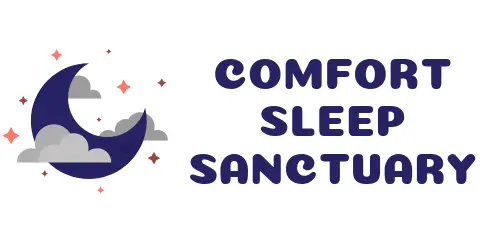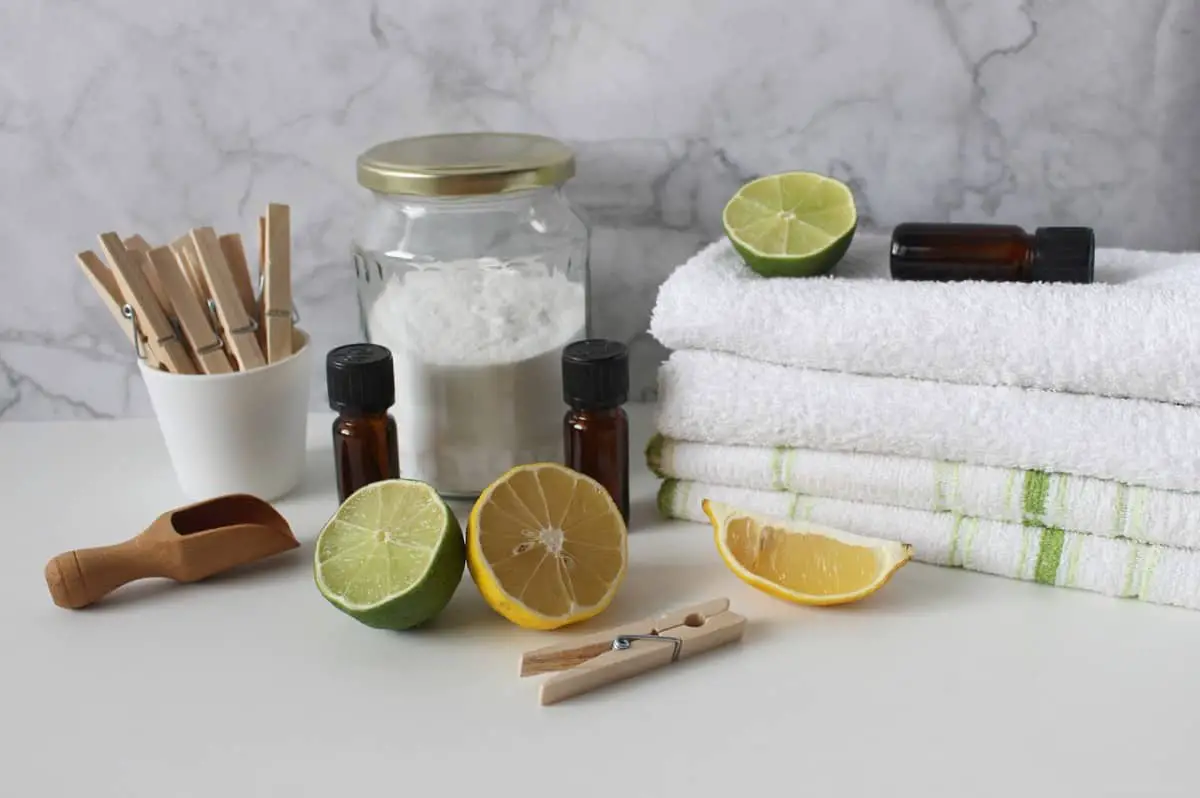Table of Contents
**This page contains affiliate links and I will be compensated if you make a purchase after clicking on my links**
White sheets should look “clean”. There’s a reason every hotel, motel, and guest accommodation uses white sheets and towels.
However, keeping your white sheets looking clean is challenging. Those trendy grey sheets can hide stains and discoloration. But white sheets need to look pristine.
Why bleach is not great
Yes, chlorine bleach (sodium hypochlorite) disinfects your sheets. This is especially important for those with allergies.
However, washing in hot water (yes hot, not warm) plus detergent removes the offending allergens, including dust mites. No bleach required.
Indeed, even the CDC indicates that bleach is “not necessary” to add to laundry to prevent the spread of Methicillin-resistant Staph aureus (MRSA).
So, bleach is supposed to whiten your sheets, correct?
Even that may be problematic. Protein deposits, from our sweat and dead skin, can react with the bleach and cause yellowing.
- If you must use bleach, add it after the wash cycle. That way, detergent has an opportunity to first remove all those offending protein deposits. (Check the instructions for your washer. It may have a bleach dispenser that drops the bleach in at the correct time.)
- Use no more than the recommended amount. In this case, more is not better.
Keep in mind that chlorine bleach (NaClO) has a short shelf-life of less than six months. Over time it breaks down into salt (NaCl) and water (H2O). Because of this, unless dumped in high concentrations, it’s not particularly harmful to the environment.
In addition to discoloration, chlorine bleach is thought to break down and weaken natural fibers made of cellulose, such as cotton, linen, or rayon.
Bleach denatures or breaks apart, protein. This is a good thing if that protein belongs to a colony of bacteria you wish to kill. Not so good if the fiber—like wood or silk—is mostly made of protein.
Never use bleach on either wool or silk
Fortunately, the cellulose of cotton, linen, and rayon is a complex carbohydrate, not a protein.
Note, Clorox, the manufacturers of chlorine bleach, firmly denies that bleach breaks down cellulose-based fabrics. After 50 washes in either detergent or detergent plus bleach, they found no difference in wear.
(Personally, I’m waiting for an unbiased study to decide.)
Simple chemistry logic would dictate that continued exposure to any oxidizing agent, such as bleach, would be expected to have some negative effect on natural fibers over time.
Fabric softener isn’t great either
Fabric softener is designed to coat the fabric to make if feel “softer”. Early versions used oil, but newer formulations may include quaternary ammonium or other surfactants that also prevent static electricity.
Over time fabric softeners leave a build-up. This build-up may alter the properties of the fabric, hindering water absorption, breathability, and wicking. All the properties we rely on to keep us cool and comfortable.
Natural fibers, such as cotton, linen, and even Lyocell, become softer on their own with repeated washing. No fabric softener is needed.

Image by Jaymantri on Pexels
Avoid dryer sheets as well
Dryer sheets work just like fabric softeners, just in the dryer. Like fabric softeners, they may leave a residue that builds up over time.
In addition, dryer sheets leave residue in your dryer and may start to clog up the lint filter screen. If this isn’t cleaned, over time your dryer won’t dry as well.
In addition, residue may build up on the moisture sensor. As a result, your dryer may over-dry your laundry.
Also, many of the chemicals found in dryer sheets are toxic to both cats and dogs. Keep your pets safe around the laundry room.
DO NOT USE dryer sheets to remove loose hair from cats or dogs, or use with their bedding
Cats and dogs lick their fur and will ingest anything they step or lie in.
If YOUR bed is also their bed, then skip the fabric softener and dryer sheets altogether.
1. Oxygen bleach
Another form of bleach is based on hydrogen peroxide (H2O2) which also disinfects and whitens whites.
If you’ve ever used peroxide to disinfect a cut, you’ll note the formation of bubbling foam. This is from a defensive enzyme produced by bacteria that breaks the peroxide down into water and oxygen. Alas, it won’t be enough to save the bacteria.
These bleaches may be labeled “chlorine-free bleach” or “oxygen bleach”. Unlike chlorine bleach, oxygen bleach is considered safe for colors and is most likely included in your detergent as a “booster”.
Oxygen bleach is either available as diluted hydrogen peroxide, or in powdered form, often sold under the brand name OxiClean™. The latter is made of sodium percarbonate, which breaks down into hydrogen peroxide plus sodium carbonate upon exposure to water in your wash.
Oxygen bleach is considered “gentler” on fabrics than chlorine bleach, but it is still an oxidizer. Again, don’t use it on either silk or wool.
Does it work? Opinions are mixed.
If your whites are dingy, mix up a solution and soak your sheets for several hours to overnight. You can do this in your top-loading washer or a giant plastic container. Wash as usual.
Like chlorine bleach, hydrogen peroxide is unstable. It quickly breaks down into oxygen and water. Powdered versions last longer but will also eventually break down after a few years.
Because the byproducts are simply water, oxygen (and perhaps carbonate), oxygen bleaches are considered safe for the environment.
Sodium carbonate
In addition to sodium percarbonate, OxiClean™ and similar brands also include about a third sodium carbonate.
Sodium carbonate, also called washing soda, can soften water by removing magnesium and calcium ions. This softening effect will help the detergent lift dirt from fabric.
Sodium carbonate is also slightly alkaline which also helps dissolve stains.
Note that sodium carbonate is different from baking soda, or sodium bicarbonate (see below). (Although Arm & Hammer™ sells both, and they work in a similar way.)
2. Baking soda
Baking soda is sodium bicarbonate. When you bake a cake, the baking soda releases carbon dioxide in response to the heat of the oven. These gas bubbles cause your cake to rise.
Because bicarbonate is slightly alkaline it can also be used as an antacid. (Follow the instructions on the Arm and Hammer™ box.)
Add a half cup of baking soda to either your colored or white load. (Or a quarter cup for front-loaders.)
Like sodium carbonate, it dissolves stains and softens water, which helps detergent work better.
Baking soda is also famous for dealing with odors. If you are washing in hot, you should be removing all the stink, along with the bacteria that caused the stink.
But if for some reason, you must wash in a cooler temperature, baking soda may help.
If you are already using washing soda or OxiClean™, baking soda at this point may be redundant.
Just a reminder, OxiClean™, washing soda, or baking soda are intended to supplement your laundry detergent, NOT replace it.

Photo by Ryoji Hayasaka on Unsplash
3. Borax
Borax is sodium tetraborate decahydrate and is sold as a laundry booster (20 Mule Team Borax®).
Despite its complex name, it works like washing soda and baking soda. It softens hard water and controls odor in both powder and dissolved form.
Borax is considered “not acutely toxic”, however, keep it out of reach of children and pets.
It also works as an insecticide. For those who’ve suffered a flea infestation, sprinkling borax into your carpet will kill the fleas. (However, keep your pets away from the carpet as borax can cause breathing problems in cats.)
Traps of borax mixed with cat food can also kill ants, although my experience has been mixed. (Obviously, keep the traps away from kitty.)
For extra dinginess
As mentioned above, you can pre-soak dingy laundry in OxiClean™ for several hours to overnight. You can do the same thing with either washing soda, baking soda, or borax. Soak for 30 minutes at a minimum.
If you have specific stains or discoloration (eg, sweat stains), create a paste of powder and water and leave it on for 30-60 minutes. Rinse off the powder and launder as usual.
In some cases, your sheets may become dingy because dirt and oil stick to detergent residue. Therefore, use the minimum detergent needed and thoroughly rinse.
Adding a second rinse (cold water) is one option. Alternatively, try distilled white vinegar, below.
4. Distilled white vinegar
Add up to one-half cup of white vinegar during the rinse cycle. It’s mildly acidic and will help dissolve and rinse away the detergent and alkaline “boosters” that have come before.
It’s also a disinfectant, in case the wash cycle didn’t remove everything.
Use white vinegar, not other kinds of vinegar, so that no stains are added.
Use either the fabric softener dispenser in your washer or add it manually at the start of the rinse cycle.
White vinegar also works great to wash your washer. Perhaps you are guilty of leaving wet laundry in your washer for too long or closing the lid without allowing it to thoroughly dry? Mildew may be growing inside.
Add two cups of white vinegar and run your washer through a complete cycle empty. Run a second cycle with detergent only.
Dingy fabrics—cotton only—can be pre-soaked in white vinegar as well.
5. Bluing agents
Whites that are slightly bluer appear to be whiter and brighter. If your sheets appear a tad yellow, these agents may counteract that.
Bluing agents, such as Mrs. Stewart’s Laundry Bluing®, are concentrated dyes, so follow the instructions and dilute with plenty of water before adding to your white load only.
They may be used either in the wash cycle or the rinse cycle. Never add undiluted dye directly to the detergent/fabric softener dispenser or to soaking sheets.
Want to learn more about the products mentioned?
[If you experience issues with menus or links not working, it is most likely due to your Ad blocker.]


